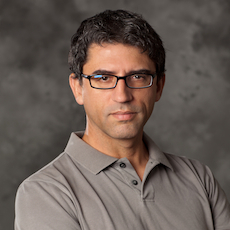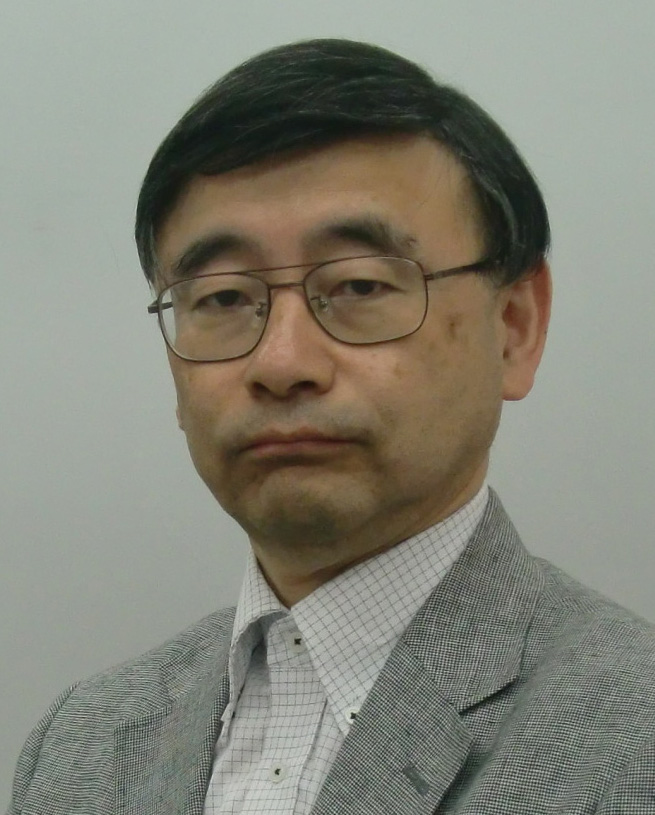Plenary Talks
ISITA 2014 will include two plenary talks.

Cellular Interference Alignment
Giuseppe Caire, Technical University of Berlin/University of Southern California
Despite the famous “everybody eats half of the cake” promise, schemes achieving 1/2 DoFs per user in general fully connected Gaussian networks require precoding over a signal space of asymptotically large diversity, e.g., over an infinite number of dimensions for time-frequency varying fading channels, or over an infinite number of rationally independent signal levels. In this talk we consider a recently proposed scenario inspired to the regular topology with non-fully connected interference graph typical of cellular systems, where the promised optimal DoFs are achieved with linear “one-shot” precoding (i.e., over a single time-frequency slot). First, we examine the uplink problem with a receiver message-passing scheme where neighboring base stations can exchange already decoded messages. Notice that this network architecture is much simpler and involve much less backhaul rate requirements than the classical “Wyner model” networks with fully centralized receiver processing (also known as C-RAN or “Cloud Base Stations” in the applied literature). Our alignment & (local) interference cancellation solution achieves non-trivial per-user DoFs and in several cases we can prove that these DoFs are optimal. Furthermore, in order to avoid signaling scheme relying on the strength of interference, we further introduce the notion of topologically robust schemes, which are able to guarantee a minimum rate (or DoFs) irrespectively of the strength of the interfering links. Towards this end, for the MxM sector case, we propose an alignment scheme which is topologically robust and still achieves the same optimum DoFs. Finally, we present a novel DoFs uplink-downlink duality result which proves that, whatever DoFs can be achieved in the uplink the decoded message sharing and alignment scheme, the same can be also achieved in the downlink through a “dual” precoding scheme that involves only cooperation among neighboring base stations. Unlike classical downlink in Wyner models, where global message sharing across base stations is required, in our scheme base stations share quantized dirty-paper coded signals only among their neighbors (no global message cooperation).
Giuseppe Caire was born in Torino, Italy, in 1965. He received the B.Sc. in Electrical Engineering from Politecnico di Torino (Italy), in 1990, the M.Sc. in Electrical Engineering from Princeton University in 1992 and the Ph.D. from Politecnico di Torino in 1994. He was a recipient of the AEI G.Someda Scholarship in 1991 and has been post-doctoral research fellow with the European Space Agency (ESTEC, Noordwijk, The Netherlands) in 1994-1995. He has been Assistant Professor in Telecommunications at the Politecnico di Torino, Associate Professor at the University of Parma, Italy, Professor with the Department of Mobile Communications at the Eurecom Institute, Sophia-Antipolis, France, and he is currently a professor of Electrical Engineering with the Viterbi School of Engineering, University of Southern California, Los Angeles and an Alexander von Humboldt Professor with the Electrical Engineering and Computer Science Department of the Technical University of Berlin, Germany. He served as Associate Editor for the IEEE Transactions on Communications in 1998-2001 and as Associate Editor for the IEEE Transactions on Information Theory in 2001-2003. He received the Jack Neubauer Best System Paper Award from the IEEE Vehicular Technology Society in 2003, and the IEEE Communications Society & Information Theory Society Joint Paper Award in 2004 and in 2011. Giuseppe Caire is a Fellow of IEEE since 2005. He has served in the Board of Governors of the IEEE Information Theory Society from 2004 to 2007, and as officer from 2008 to 2013. He was President of the IEEE Information Theory Society in 2011. His main research interests are in the field of communications theory, information theory, channel and source coding with particular focus on wireless communications.

Topics in FV and VF Source Coding
Hirosuke Yamamoto, The University of Tokyo
It is well known that Huffman coding and Tunstall coding are optimal in FV (fixed-to-variable length) code and VF (variable-to-fixed length) code, respectively. But, the optimality of Huffman (Tunstall) coding is proved in an implicit assumption such that the optimal coding can be achieved by a fixed coding (parsing) tree. If we use an almost instantaneous FV (VF) code, which consists of multiple coding (paring) trees and allows a few decoding (encoding) delay, we can attain better compression rate than Huffman (Tunstall) coding. This talk reviews several interesting topics in FV and VF source coding such that alphabetic coding, competitively optimal coding, direct access decoding, and so on, in addition to almost instantaneous coding.
Hirosuke Yamamoto was born in Wakayama, Japan, in 1952. He received the B.E. degree from Shizuoka University, Shizuoka, Japan, in 1975, and the M.E. and Ph.D. degrees from the University of Tokyo, Tokyo, Japan, in 1977 and 1980, respectively, all in electrical engineering. In 1980, he joined Tokushima University. He was an Associate Professor at Tokushima University from 1983 to 1987, the University of Electro-Communications from 1987 to 1993, and the University of Tokyo from 1993 to 1999. Since 1999, he has been a Professor at the University of Tokyo and is currently with the Department of Complexity Science and Engineering at the university. In 1989-1990, he was a Visiting Scholar at the Information Systems Laboratory, Stanford University, Stanford, CA. His research interests are in Shannon theory, data compression algorithms, and information theoretic cryptology. He served as the Chair of IEEE Information Theory Society Japan Chapter in 2002-2003, the TPC Co-Chair of the ISITA2004, the TPC Chair of the ISITA2008, the president of the SITA (Society of Information Theory and its Applications) in 2008-2009, the president of the ESS (Engineering Sciences Society) of IEICE in 2012-2013, an Associate Editor for Shannon Theory, the IEEE Transactions on Information Theory in 2007-2010, Editor-in-Chief for the IEICE Transactions on Fundamentals of Electronics, Communications and Computer Sciences in 2009-2011. He is a Fellow of the IEEE and the IEICE.